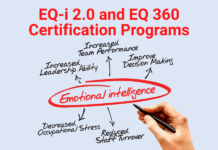
Talk vs. Action
There is a specific and unfortunately common type of corporate behavior where people substitute sounding smart in a meeting for actually contributing work.
People will come to meetings with lots of insight and data – and good intentions. They will always be ready to shed more light on the problem, provide detail, benchmarks, and customer examples. They will have lots of smart stuff to say.
Describing the “Situation”
What is happening here is that people are discussing the Situation.
Situation discussions describe: What we are doing, what the market is doing, what the competitors are doing, what the investors are saying, what the problems are, what the costs are, what the customers are demanding, what the changes in business model are causing, what the opportunities are, what the employees are doing and not doing…
People might contribute facts that no one else knows, and might sound really smart while saying them, but the fact of the matter is that there is no forward progress because you are simply describing what is happening.
Groups of people have a very, very strong tendency to discuss the Situation. A lot. Over and over again. For a really long time.
Situation conversations are the easiest conversations to have because there is no risk. You are simply stating facts.
Breaking through
It’s vitally important as a leader to recognize when your team is falling into the pattern of accepting smart sounding ideas and inputs instead of measurable forward progress.
The most effective way I have found to break through this endless talking is to recognize and explicitly call out when you get stuck talking too long about the Situation.
Situation discussions don’t go anywhere, they only gather more detail.
A situation discussion will be colorfully augmented by someone saying, “Well, this is an even more critical problem than we thought because I just got back from Asia and saw this…”
Or “This is even harder because I learned our competitors are launching their new version this quarter…”
More and more detail gets added and the Situation discussion turns into a bigger and bigger Situation-hairball.
Sure it’s important to use some time to note and understand the situation, but you can just feel it when everyone has internalized the situation and then … you keep talking about it! Talking and talking and talking about it. You can feel it in your stomach when the meeting is not going anywhere and you’re still talking. The forward motion everyone is craving never happens.
Situation discussions are basically: Collectively admiring the problem.
Situation vs. Outcome
The way to break through this type of stall is to train your team to catch yourselves having a situation discussion, and then say, “Let’s stop talking about the Situation and let’s try to define an Outcome that we want to achieve”.
When you move the discussion to Outcome, you can break the trance.
Situation: We are uncompetitive. Our revenue has stalled. The market has changed. The employees are unmotivated.
Outcome: We will have a new service in the market with 3 new features in the next quarter
Outcome: We will have an increased focus on customer self service and web support in the next 6 months.
Outcome: We have train our inside sales people doing 20% more business development
A clear path to specific action
By being willing to break the situation discussion and propose some outcomes, you can start moving forward again.
Sure, your team might argue about which outcome is the right one to choose, but that is a productive conversation that will allow you to move forward for 2 important reasons:
1. You are selecting something to actually do (instead of continuing to admire the problem)
2. The action plan will fall right out if you select a concrete enough outcome.
The concrete outcome demands a specific set of actions. You will move forward.
This idea of moving from talking to defining concrete outcomes is one of the core ideas I use in the work I do with management teams in my Strategy into Action program.
I also talk a lot more about this in my book MOVE: How Decisive Leaders Execute Strategy Despite Obstacles, Setbacks, and Stalls.
What do you think?
Join the conversation about this on my Facebook page Patty Azzarello Practical Business Advice for Humans.





